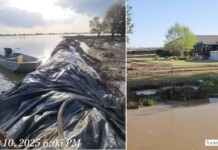 Stanford University scientists have found a new, highly efficient way to produce liquid ethanol that doesn’t involve energy intensive food production, like corn-based fuel. This promising discovery involving carbon monoxide gas could provide an eco-friendly alternative to conventional ethanol production from crops, say the scientists.
Stanford University scientists have found a new, highly efficient way to produce liquid ethanol that doesn’t involve energy intensive food production, like corn-based fuel. This promising discovery involving carbon monoxide gas could provide an eco-friendly alternative to conventional ethanol production from crops, say the scientists.
“We have discovered the first metal catalyst that can produce appreciable amounts of ethanol from carbon monoxide at room temperature and pressure – a notoriously difficult electrochemical reaction,” said Matthew Kanan, an assistant professor of chemistry at Stanford and coauthor of the study.
Most ethanol today is produced at high-temperature fermentation facilities that chemically convert corn, sugarcane and other plants into liquid fuel. But growing crops for biofuel requires thousands of acres of land and vast quantities of fertilizer and water. In some parts of the United States, it takes more than 800 gallons of water to grow a bushel of corn, which, in turn, yields about 3 gallons of ethanol.
They call the process “oxide-derived” because a novel metallic electrode was produced from copper oxide.
For the process to be carbon neutral, scientists will have to find a new way to make carbon monoxide from renewable energy instead of fossil fuel, the primary source today. Kanan envisions taking carbon dioxide (CO2) from the atmosphere to produce carbon monoxide, which, in turn, would be fed to a copper catalyst to make liquid fuel. The CO2 that is released into the atmosphere during fuel combustion would be re-used to make more carbon monoxide and more fuel – a closed-loop, emissions-free process.
Their study results are published in the April 9 advanced online edition of the journal Nature.
(READ more the story at Stanford.edu)



















